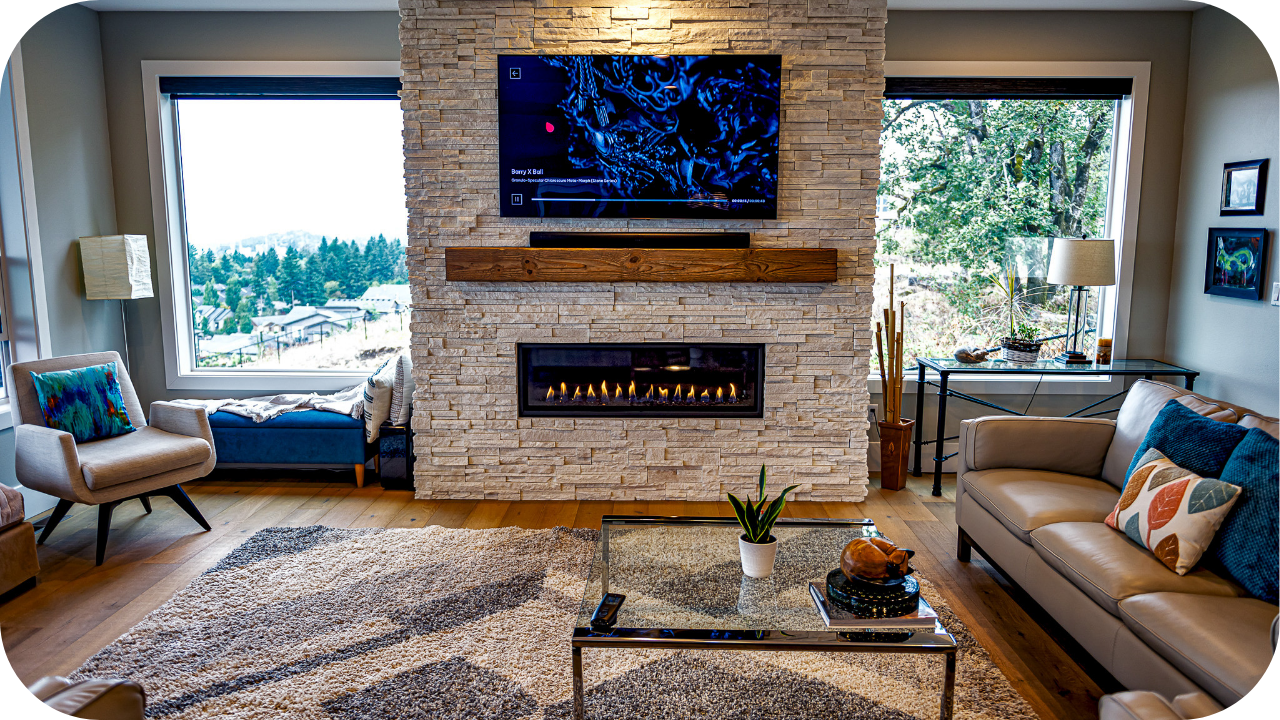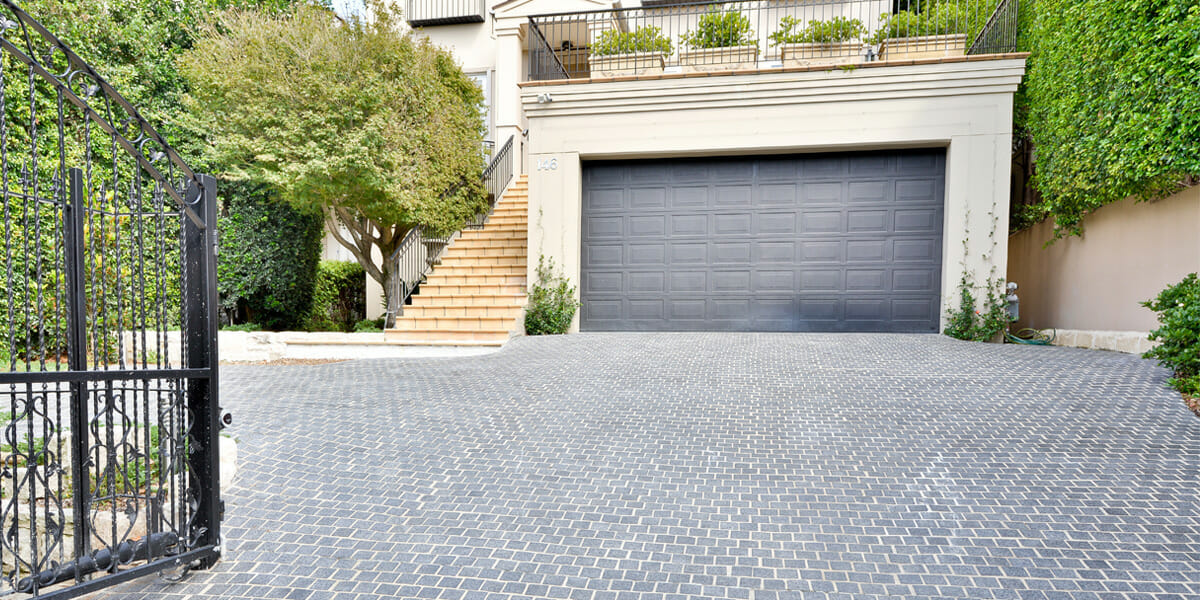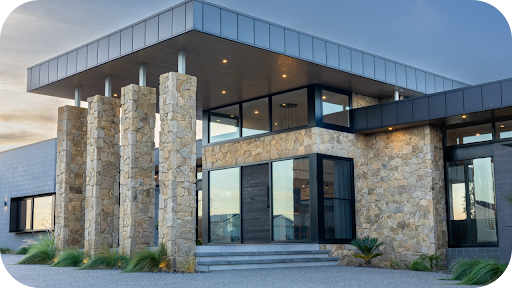
Stone wall panels are a popular choice for fireplace surrounds, adding texture, warmth, and timeless appeal to interior spaces.
Whether your style leans traditional or modern, stone brings natural character that makes the fireplace a standout feature. From soft, refined finishes to bold and rugged textures, there’s a look to suit every room.
This article outlines what you need to consider when selecting the right stone wall panels, offering practical guidance to help you achieve a design that is both visually striking and built to last.
Key Factors to Consider When Choosing Stone Panels for Fireplaces
Making the right choice starts with knowing what to look for. These key considerations will help you select stone panels that suit your fireplace’s style, safety, and structure.
1. Choose Fire-Safe and Heat-Resistant Materials
It is essential to pick stones that naturally resist heat to ensure safety around your fireplace. Avoid synthetic or resin-based panels which can degrade or become hazardous when exposed to high temperatures. Always check Australian safety standards.
2. Assess Panel Thickness and Weight
Stone panels vary in thickness and weight, which affects how they need to be supported. Thicker panels require solid backing or wall reinforcement, whereas slimline panels suit lighter installations. Knowing this helps protect your walls and ensures lasting stability.
3. Match Stone Style to Interior Design
Stone tones and textures should complement your room’s existing style. Neutral and earthy colours work well in traditional or natural-themed rooms. For modern spaces, darker stones with bold textures like split face or honed finishes create a striking effect.
4. Decide on Panel Format and Layout
You can choose between loose stone and modular panel formats such as Z-tiles. Planning your layout with options like coursed, random, or stacked patterns and deciding on vertical or horizontal orientation can enhance your fireplace’s visual appeal.
5. Consider Maintenance Requirements
Different stone types need different levels of care. Some require sealing to protect against soot and smoke stains, while others are naturally more resistant. Understanding maintenance needs upfront ensures your fireplace stays beautiful for years.
6. Evaluate Installation Complexity
Installation varies depending on stone weight, panel format, and wall surface. Some stones require professional fitting to ensure safety and longevity. Considering installation demands early helps plan budget and timeline effectively.
Best Natural Stones for Fireplace Wall Panels
Choosing the right stone material sets the tone for your fireplace’s style, durability, and maintenance needs. Here are popular stone options and what makes each suitable for indoor fireplace wall panels.
1. Granite
Granite is prized for its durability and heat resistance, making it ideal for fireplace surrounds. Its natural grain and sparkle add a touch of elegance while withstanding high temperatures and daily wear with minimal maintenance.
2. Limestone
Limestone offers a soft, refined appearance with neutral tones that complement many interior styles. While less heat resistant than granite, it remains a popular choice for fireplaces, especially in rooms with moderate use and careful maintenance.
3. Quartz
Quartz panels provide rich textures and subtle sparkle, adding depth to fireplace designs. Engineered quartz options combine durability with a wide range of colours, making it suitable for contemporary interiors that demand both style and resilience.
4. Travertine
Travertine has a distinctive porous texture and warm tones, bringing natural charm to fireplace walls. It is relatively soft, requiring sealing and care, but delivers an inviting, rustic aesthetic that suits traditional and transitional designs.
5. Sandstone
Sandstone’s earthy colours and textured surface create a cosy, organic feel around fireplaces. Its moderate heat resistance and versatility allow it to work well in both classic and modern interiors when properly sealed.
Styling Ideas: How to Make Your Fireplace the Focal Point
Enhancing your fireplace’s look requires thoughtful styling choices. These ideas will help create a stunning focal point that draws attention and complements your room’s overall design.
1. Use Full-Wall or Partial Cladding
Decide whether to cover the entire wall or only the area immediately surrounding the firebox. Full-wall cladding creates a bold, dramatic feature that dominates the room, while partial cladding adds subtle texture and interest without overwhelming the space.
2. Frame with Timber Mantels or Metal Trims
Incorporate timber mantels or metal trims around stone panels to provide visual contrast and definition. Select finishes and colours that complement the stone and your overall interior style, creating a cohesive, balanced, and sophisticated fireplace surround.
3. Incorporate Lighting to Enhance Texture and Depth
Use carefully positioned accent or recessed lighting to highlight the natural textures and colour variations in your stone panels. Good lighting adds warmth, depth, and visual drama, making your fireplace a captivating feature in any room.
4. Match Hearth Stone with Wall Panels
Choose hearth materials that coordinate with your wall panels to achieve a harmonious, unified look. Matching or complementary stones provide a smooth transition between the hearth and wall, helping to anchor the fireplace as the room’s focal point.
5. Add Complementary Decorative Elements
Consider adding elements such as vases, sculptures, or artwork near the fireplace to complement the stone wall panels. These details add personality and complete the design, enhancing the overall ambience and visual appeal of the space.
Installation Tips for Indoor Stone Fireplaces
Careful installation is crucial for safety, durability, and achieving a flawless finish. Follow these tips to ensure your indoor stone fireplace panels are installed correctly.
- Prepare the wall surface properly: Make sure the wall is clean, dry, and structurally sound before starting. Add fire-resistant backing boards or insulation where necessary to protect surrounding surfaces and comply with safety standards.
- Choose the right adhesives and tools: Use adhesives designed specifically for natural stone and heat exposure. Employ appropriate trowels, spacers, and levels to ensure even, secure installation that lasts.
- Apply suitable grouting and jointing techniques: Select grout compatible with your chosen stone and indoor conditions. Decide on tight joints for a sleek look or wider joints for a rustic feel, applying grout evenly to avoid staining.
- Consider professional installation versus DIY: Professionals understand building codes, handling heavy stone, and finishing details. While DIY is possible, it requires skill and planning to avoid costly errors or safety risks.
- Allow proper curing and drying time: After installation, give adhesives and grout sufficient time to cure completely. Rushing this process can weaken the bond and affect the longevity of the stone panels.
- Ensure proper ventilation during installation: Good airflow helps adhesives and grout dry properly, preventing moisture build-up that can lead to mould or weakened adhesion over time.
Maintenance and Long-Term Care for Stone Fireplace Panels
Proper maintenance keeps your stone fireplace panels looking beautiful and protects your investment for years. Follow these essential care tips to preserve texture, colour, and durability.
- Clean regularly with gentle products: Use pH-neutral cleaners and a soft brush to remove dust and dirt. Avoid harsh chemicals that can erode stone surfaces or strip protective sealants, especially on porous stones like limestone or sandstone.
- Reseal stone panels as needed: Some stones, including limestone, travertine, and sandstone, benefit from resealing every two to three years. This helps prevent moisture penetration, staining, and maintains the stone’s natural appearance.
- Inspect for damage early: Regularly check panels for chips, cracks, or loose pieces. Prompt repairs prevent further damage and water ingress, which can cause long-term structural issues.
- Prevent soot and smoke stains: Clean the fireplace area frequently to reduce soot build-up. Use appropriate stone cleaners designed to remove smoke residues without harming the stone.
- Avoid abrasive cleaning tools: Steer clear of steel wool or harsh scrubbing pads that can scratch or dull the stone’s surface. Gentle cleaning preserves texture and finish.
- Protect against moisture: Ensure good ventilation around the fireplace to prevent dampness. Moisture can lead to mould growth and degrade adhesive bonds over time.
Conclusion
Choosing the right stone wall panels for your indoor fireplace combines beauty, safety, and lasting quality.
With careful selection, expert installation, and proper maintenance, your fireplace will become a stunning focal point that enhances your home’s character for years to come.
Contact Splendour in Stone today for personalised advice, premium stone options, and professional support to bring your vision to life.
More To Explore

Grey Granite Cobblestones for Driveways: Strength and Style
Grey granite cobblestones combine strength, safety, and timeless appeal, making them a popular choice for Melbourne driveways and outdoor spaces. Their natural flamed texture offers

Granite Wall Cladding Melbourne: Modern and Classic Appeal
Granite wall cladding brings both modern sophistication and classic charm to Melbourne architecture. Known for its durability and natural beauty, granite transforms façades, feature walls,


